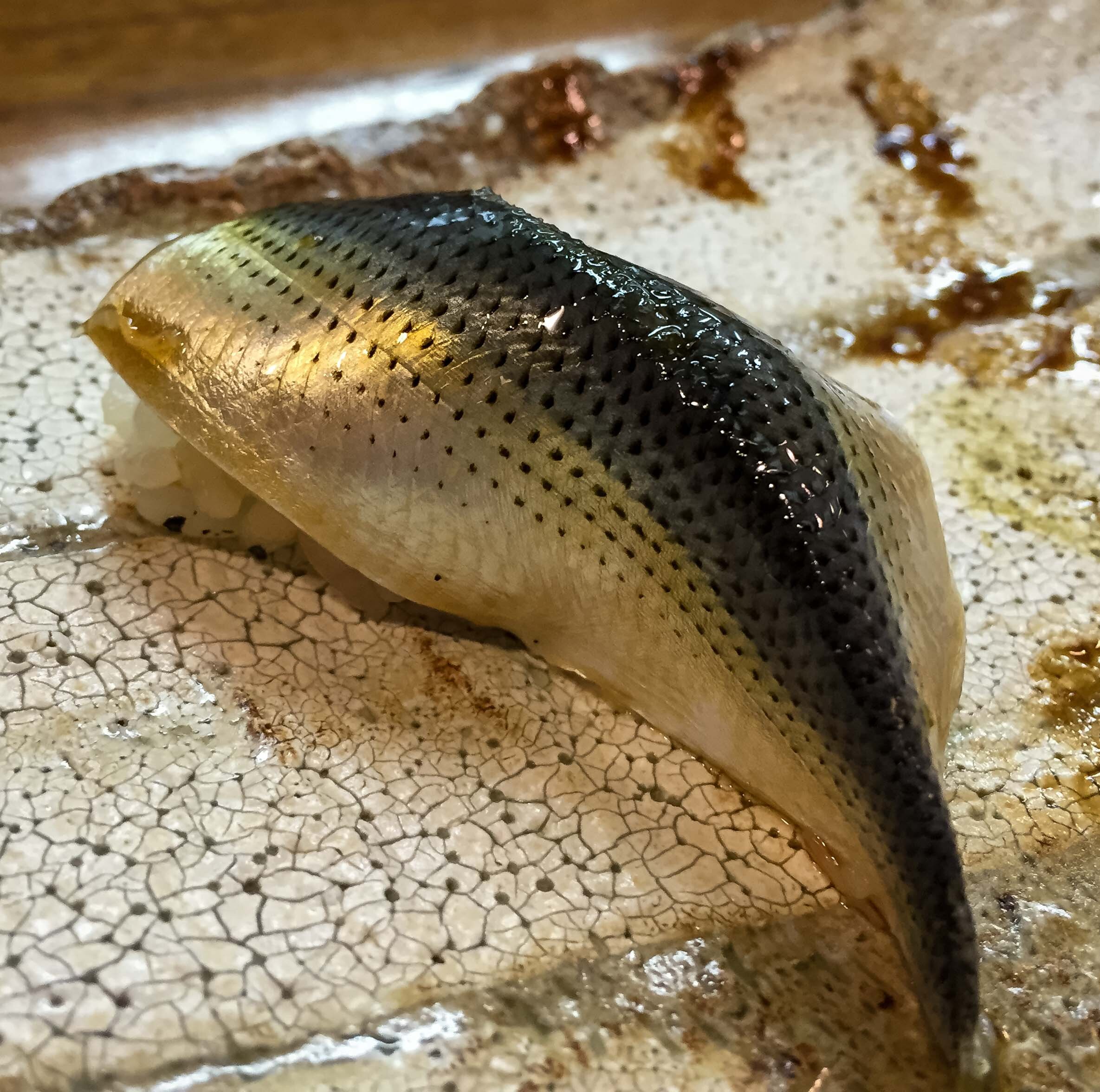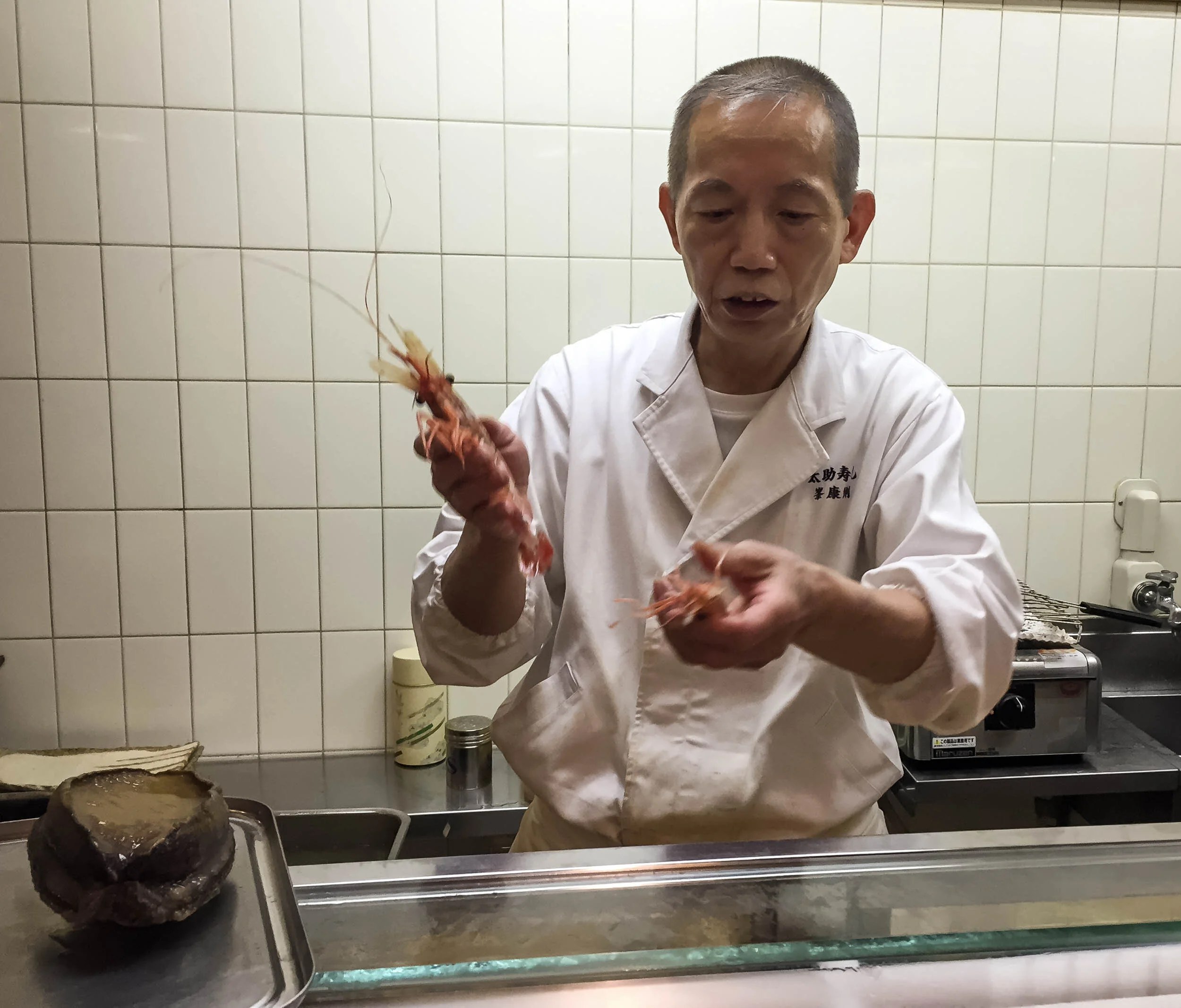
41. Master sushi maker at his very high end shop. Goes to the wholesale market each morning and sees what looks best. Recommends eating here no more than 1x per year to keep it special. (Tokyo, 2015)

42. In English, this is simply "shad," but in Japanese it is a "career" fish, i.e., it's referred to differently as its size changes. For typical sushi size, it's called "kohada." (Tokyo, July 2015)

43. Japanese jack mackerel, known as "Aji." (Tokyo, July 2015)

44. Carefully making sushi w sea urchin ("uni") from the box on the counter. (Tokyo, July 2015)

45. Sea urchin sushi ("uni") w a bit of salt. The maker pays enormous attention to the the amount, density, texture, etc. of the rice to match it w each portion of fish. (Tokyo, July 2015)

46. The master explaining about his crustaceans and his extremely choosy approach to purchasing each morning; slow-steamed abalone ("awabi") on the counter. (Tokyo, July 2015)

47. "Hirame," a local east asian flounder, w "tobiko," or flying fish roe. Notice the rice. (Tokyo, July 2015)

48. Shrimp, or "ebi." The owner requires a minimum 10 minute break between servings, so as to more fully appreciate the experience. (Tokyo, July 2015)
info
/
1
2
3
4
5
6
7
8
·
·
·
·
·
·
·
·